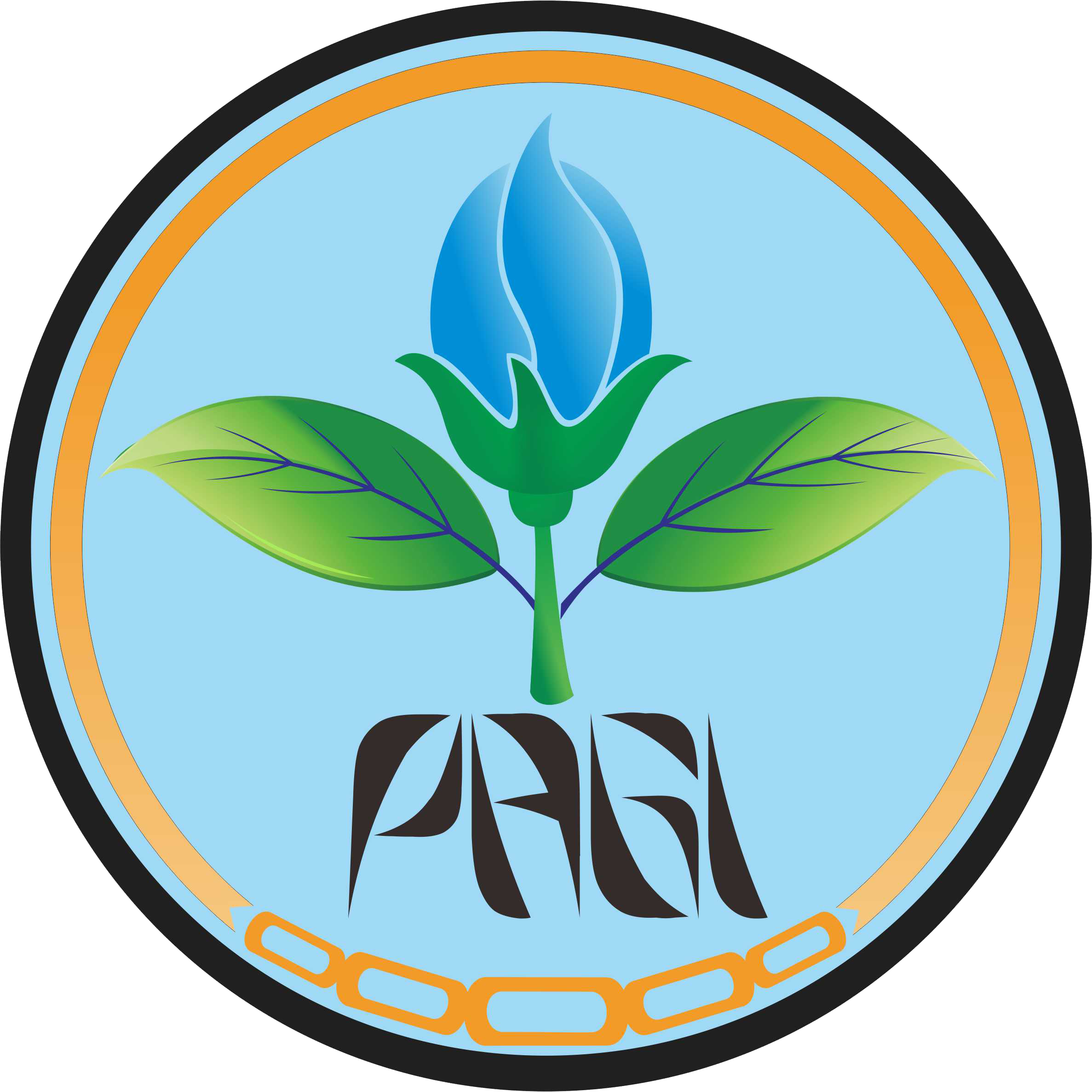Ketahanan Beberapa Varietas Padi terhadap Cercospora oryzae
Abstract
Rice is the source of staple food for most Indonesian people. The demand is continually increasing as the impact of increasing the people population. Sustainable development of rice must be done by the government. One of the problems in rice production is narrow brown leaf spot disease caused by Cercospora oryzae. This study aimed to determine the resistance of some varieties of rice to C. oryzae. The study was conducted on a field scale with natural inoculation and greenhouse with artificial inoculation using C. oryzae conidia suspension density of 105 conidia ml-1. The parameters observed, were incidence of disease, disease severity, the rate of infection, Area Under the Disease Progress Curve (AUDPC), and crops production. The result showed in the field that rice varieties of Gagak Hitam and Pandan Wangi were categorized as moderat resistant, while IR64, Inpari4, Sunggal and Ciherang showed high susceptible to C. oryzae. The results of greenhouse study showed that Hitam Gagak and Pandan Wangi rice varieties were categorized as resistant and IR64, Inpari4, Sunggal, Ciherang were moderate resistant (RR) against C. oryzae. The resistance of rice varieties affected by the interaction between pathogen genes that determine virulence and host genes that determine the resistance of the host plant.
Keywords
Full Text:
PDF(ID)References
[BP Padi] Bank Pengetahuan Padi Indonesia. 2009. Informasi Ringkas. Tanaman Padi, Bogor (ID): Pusat Penelitian dan Pengembangan Tanaman Pangan dan Balai Besar Penelitian
[BPS] Badan Pusat Statistik Kabupaten Sukoharjo. 2017. Kecamatan Grogol dalam angka 2017. http://sukoharjokab.bps.go.id. Diakses pada tanggal 14 Agustus 2018
[BPS] Badan Pusat Statistik. 2018. Rata-rata konsumsi per kapita seminggu beberapa macam bahan makanan penting 2007-2017. http://bps.go.id. Diakses pada tanggal 2 September 2018
[IRPS] IRRI Research Paper Series. 1978. Methods of screening rice for varietal resistance to Cercospora leaf spot. http://eprints.icrisat.ac.in. Diakses pada tanggal 7 Mei 2017
[IRRI] International Rice Research Institute. 2013. Standard evaluation system of rice (SES) 5th edition. http://www.worldcat.org. Diakses pada tanggal 2 Juni 2017
Aktar MW, Sengupta D, Chowdhury A. 2009. Impact of pesticides use in agriculture: their benefits and hazards. J Interdisc Taxicol 2(1): 1-12. DOI: 10. 2478/v10102-009-0001-7
Berger RD. 1972. Infection rates of Cercospora apii in mixed populations of susceptible and tolerant celery. J Phtopathol 63:535-537
Braun U, Crous PW, Nakashima C. 2015. Cercosporid fungi (Mycosphaerellaceae) 3. Species on monocots (Poaceae, true grasses). J Imafungus 6(1):25-97. DOI: 10.5598/imafungus.2015.06.01.03
Dewi IM, Cholil A, Muhibuddin A. 2013. Hubungan karakteristik jaringan daun dengan tingkat serangan penyakit blas daun (Pyricularia oryzae Cav.) pada beberapa genotipe padi (Oryza sativa L.) J HPT 1(2):10-18
Flor HH. 1955. Host-parasite interaction in flax rust-its genetic and other implication. J Phyto 45:680-685.
Groth D, Hollier C. 2010. Narrow brown leaf spot of rice. In: Lousiana Plant Pathology: Identification and Management Series. Pub. 3105. Lousiana State University Agricultural Center, Baton Rouge
Heil M, Bostock RM. 2002. Induced systemic resistance (ISR) against pathogens in the context of induced plant defences. J Annals of Botany 89:503-512. DOI: 10.17582/journal.hv/2018/5.1.7.11
Hematy K, Cherk C, Somerville S. 2009. Host-pathogen warfare at the plant cell wall. J Curr opin plant biol 12:406-413. DOI: 10.1016/j.pbi.2009.06.007
Hollier C. 1992. Narrow brown leaf spot.P. 18 in Compendium of Rice Diseases. St. Paul (CAN): APS Press
Ikhwani, Pratiwi GR, Paturrohman E, Makarim AK. 2013. Peningkatan produktivitas padi melalui penerapan jarak tanam jajar legowo. J Iptek Tan Pang 8(2):72-79
Islam W. 2018. Plant disease epidemiology: disease triangle and frecasting mechanism in highlights. J host virus 5(1):7-11. DOI: 10.17582/Journal.hy/2018/5.1.7.11.
Makarim AK, Suhartatik E, Kartohardjono A. 2007. Silikon: hara penting pada sistem produksi padi. J IPTEK TANPANG 2(2):195-204
Mani KK, Hollier CA, Groth DE. 2017. Effect of cultivar sisceptobility and planting date on narrow brown leafspot progression in rice. J Crop Protect 102: 88-93. DOI: 10.1016/j.cropro.2017.08.004
Nega A, Lemessa F, Berecha G. 2016. Distribution an importance of maize grey leaf spot Cercosporazeae-maydis (Tehon and Daniels) in South and Southwest Ethiopia. J Plant Pathol Microbiol 7(7):2-7. DOI: 172/2157-7471.1000362
Prasetyo MSH, Masnilah R, Wagiyana. 2017. Kajian intensitas penyakit bercak coklat sempit (Cercospora oryzae) dan teknik pengendaliannya pada padi (Oryza sativa L.) di Kabupaten Jember. J Gontor Agrotech Sci 3(2):59-83
Roy BA, Kirchner JW. 2000. Evolutionary dynamics of pathogen resistance and tolerance. J Evo 54(1):51-63.
Sah DN, Rush MC. 1985. Pathogenic race of Cercospora oryzae in the Southern United States. J. Phytopathol 75:1354.
Santoso, Nasution A. 2009. Pengendalian penyakit blas dan penyakit cendawan lainnya. http://litbang.pertanian.go.id. Diakses pada tanggal 11 Mei 2017.
Sitasermi T, Wening RH, Rakhmi AT, Yunani N, Susanto U. 2013. Pemanfaatan Plasma Nutfah Padi Varietas Lokal dalam Peraitan Varietas Unggul. J IPTEK Tan Pang 8 (1):22-30
Solel Z, Minz G. 1970. Infection process of Cercospora beticola in sugar beet in relation to susceptibility. JPhytopathol 61:463-466
Souza AGC, Rodrigues FA, Maffia LA, Mizubuti ESG. 2010. Infection process of Cercspora coffeicola on coffee leaf. J Phytopathol 159: 6-11.DOI: 10.1111/j.1439-0434.2010.01710.x
Suganda T, Rismawati E, Yulia E, Nasahi C. 2002. Pengujian kemampuan beberapa bahan kimia dan air perasan daun tumbuhan dalam menginduksi resistensi tanaman padi terhadap penyakit bercak daun Cercospora. J Bionatura 4(1):17-28
Refbacks
- There are currently no refbacks.






